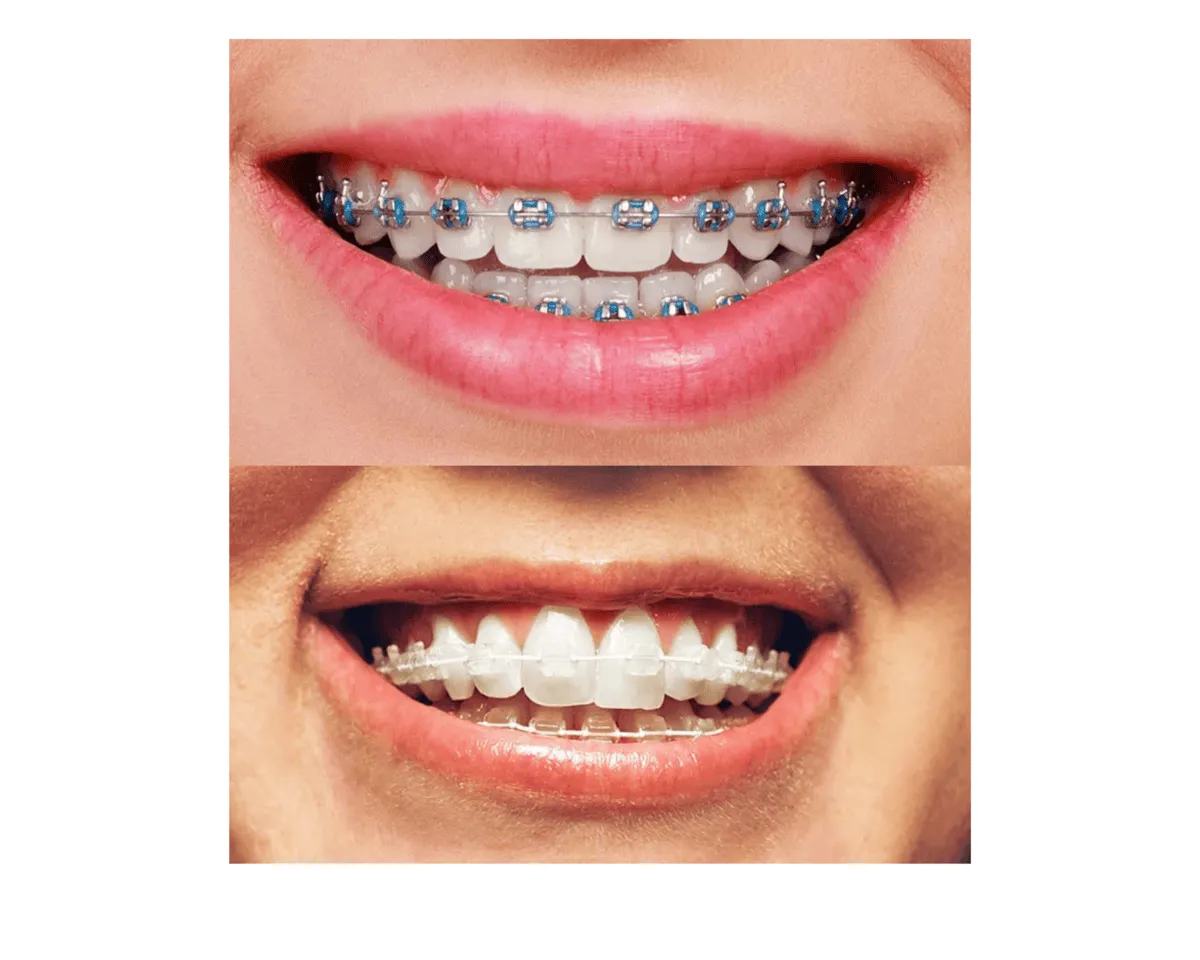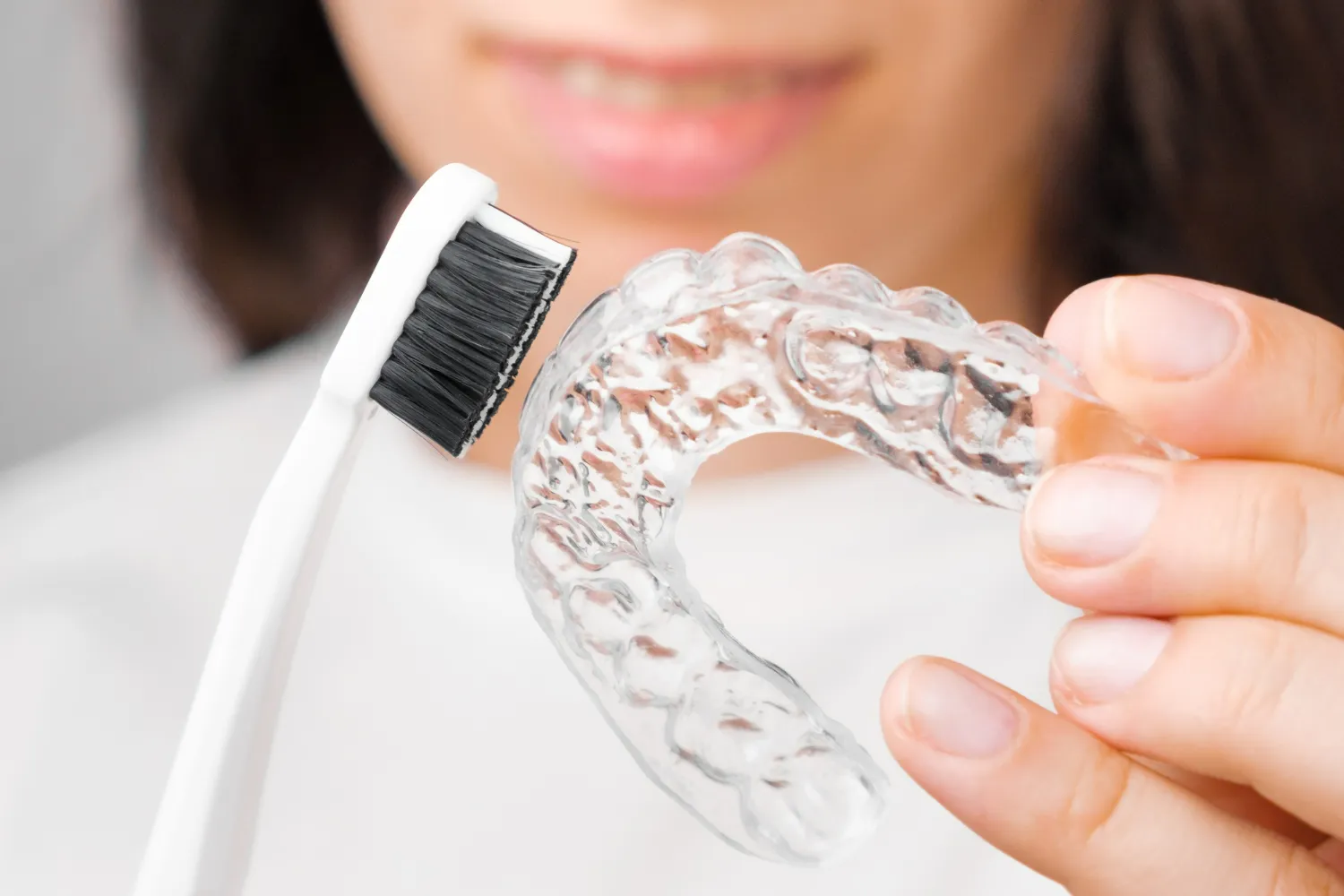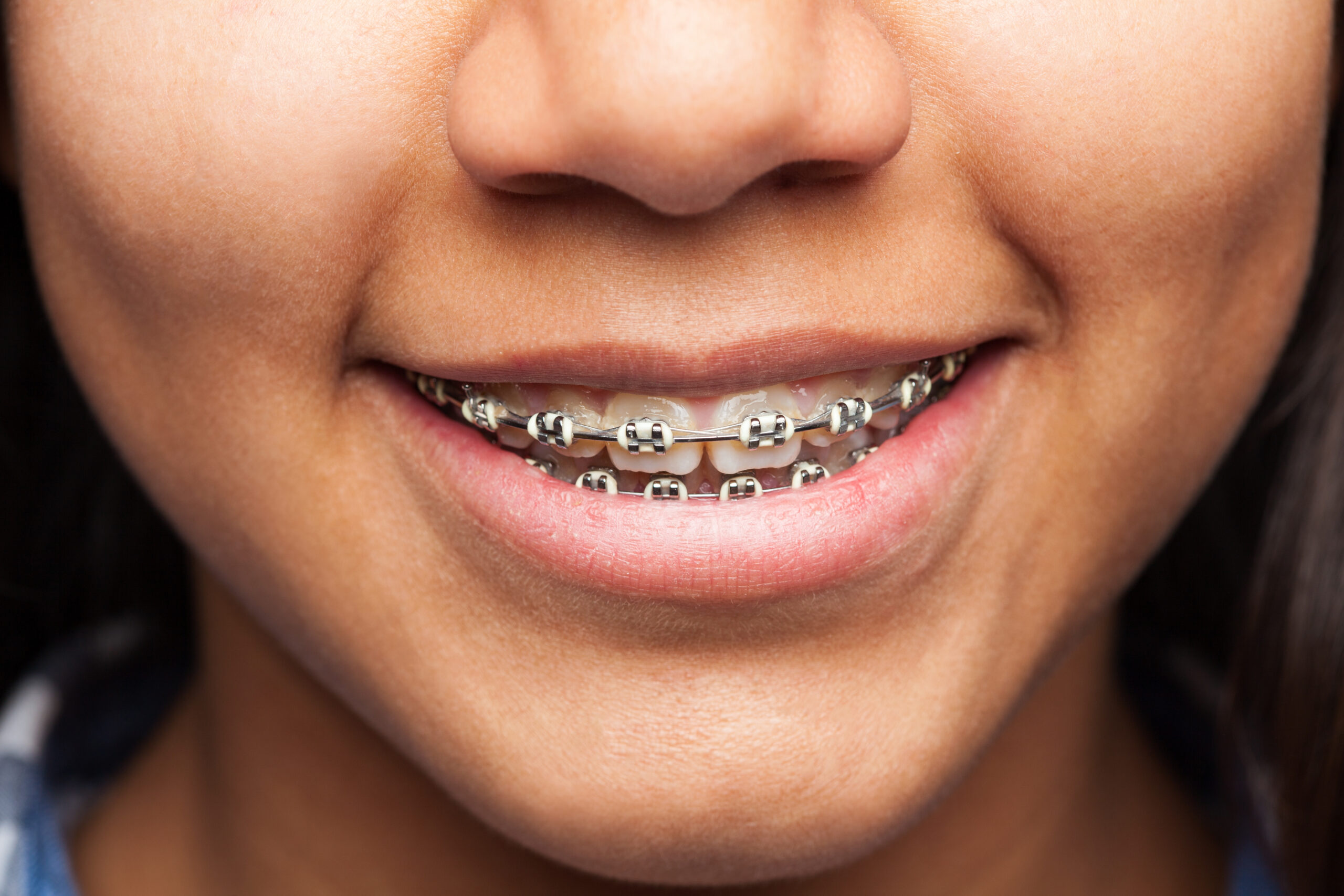When it comes to orthodontic treatments, especially Invisalign, patients often have concerns about other dental issues they might face during treatment. One such concern is bruxism, or teeth grinding, which can affect many people, especially at night. The question arises: Can you wear a night guard with Invisalign aligners? While it may seem like an easy solution to wear both a night guard and Invisalign, the two are generally not compatible. Let’s explore why and what alternatives exist to manage bruxism while still undergoing Invisalign treatment.
Why Night Guards and Invisalign Aren’t Typically Compatible
Invisalign aligners are specifically designed to fit snugly over your teeth for 20 to 22 hours a day, including while you sleep. The aligners gradually shift your teeth into their correct positions, and this process relies on the aligners being in place for most of the day and night.
A night guard, which is usually worn at night to protect teeth from the effects of grinding or clenching, is a separate dental appliance that also fits over your teeth. The problem arises because both Invisalign and night guards are designed to cover your teeth, but they serve different purposes:
- Invisalign Aligners: These clear plastic trays are designed to be worn constantly (except for eating, drinking, and brushing). They work by gently and gradually shifting your teeth into their proper alignment.
- Night Guards: These are made from thicker, more rigid material and are typically used to prevent teeth grinding. They work by providing a barrier between your upper and lower teeth to absorb the pressure from clenching and grinding at night.
Because both devices are designed to fit over your teeth, it’s difficult to wear them together. A traditional night guard can interfere with the aligners’ function, potentially slowing or halting the progress of your treatment. Wearing a night guard can also cause discomfort and may prevent the aligners from fitting properly.
Does Invisalign Provide Any Protection Against Teeth Grinding?
While Invisalign aligners are not designed to protect against teeth grinding, they do provide some level of protection for individuals who experience mild grinding. Here’s how Invisalign can help:
- A Built-in Barrier: Invisalign aligners act as a protective layer between your teeth. They reduce direct contact between your upper and lower teeth, which may help to alleviate some of the damage caused by teeth grinding.
- Protects Teeth from Minor Grinding: For individuals who grind their teeth lightly or occasionally, Invisalign may offer enough protection to prevent tooth damage, as the aligners absorb some of the pressure that would normally affect the teeth.
However, for those with more severe cases of bruxism (chronic grinding or clenching), the protection provided by Invisalign alone may not be sufficient. In these cases, additional protection may be needed.
What Are the Alternative Solutions for Bruxism During Invisalign Treatment?
If you suffer from bruxism but still want to proceed with your Invisalign treatment, there are several options available that won’t interfere with the progress of your treatment.
1. Custom Night Guards for Invisalign Users
One of the most effective solutions for dealing with bruxism during Invisalign treatment is to use a custom-made night guard specifically designed to work with your aligners.
- Designed for Invisalign Wearers: A custom night guard can be created to fit over your Invisalign aligners, offering protection against grinding while allowing your treatment to continue as planned. These guards are designed to fit comfortably and snugly over your aligners without interfering with their function.
- Thinner and More Flexible: Unlike traditional night guards, which can be bulky and uncomfortable, these custom night guards are thinner and made from a flexible material that allows for a better fit with your Invisalign aligners.
- Orthodontist Consultation: If you’re interested in this solution, it’s essential to consult with your orthodontist. They can ensure that the custom night guard is designed to meet your specific needs and won’t affect your treatment progress.
2. Stress Management Techniques
Bruxism is often linked to stress and anxiety. For many people, learning to manage stress can significantly reduce the occurrence of teeth grinding. Here are some strategies to help reduce the impact of bruxism during your Invisalign treatment:
- Yoga and Meditation: Incorporating relaxation techniques such as yoga or meditation into your daily routine can help alleviate the stress that contributes to bruxism.
- Deep Breathing Exercises: Simple deep breathing exercises, particularly before bed, can help relax the muscles responsible for grinding and clenching.
- Regular Exercise: Physical activity has been shown to reduce overall stress levels, which in turn can help manage bruxism.
3. Consult with Your Orthodontist
Bruxism can vary in severity, and it’s important to communicate with your orthodontist about any issues you’re experiencing with grinding. Your orthodontist can help develop a solution that works for both your orthodontic treatment and your bruxism. Some potential solutions include:
- Adjusting Treatment Schedules: If grinding is severe, your orthodontist may adjust your Invisalign treatment schedule to accommodate for any delays caused by wearing a night guard.
- Alternative Appliances: In some cases, your orthodontist may recommend using a different appliance designed to prevent grinding that can work with your Invisalign aligners, such as a splint or a more specialised night guard.
The Importance of Communicating About Bruxism with Your Orthodontist
It’s essential to inform your orthodontist about any bruxism (teeth grinding) issues you experience during your treatment. The sooner you communicate your concerns, the better equipped your orthodontist will be to develop a treatment plan that addresses both your orthodontic needs and bruxism.
Your orthodontist can:
- Evaluate the Severity of Bruxism: Understanding the severity of your grinding helps your orthodontist decide on the best course of action and whether adjustments need to be made to your treatment.
- Provide Tailored Solutions: From custom night guards to changes in your aligner regimen, your orthodontist can recommend the most effective strategies for managing bruxism without compromising the success of your Invisalign treatment.
Post-Treatment: Retainers and Bruxism
Once your Invisalign treatment is complete, you will likely wear a retainer to maintain your newly aligned teeth. Similar to Invisalign aligners, retainers are worn at night to ensure your teeth stay in their correct positions. This can present a challenge for individuals with ongoing bruxism, as wearing both a retainer and a night guard is not typically feasible.
Here are a few things to consider post-treatment:
- Wearing a Retainer at Night: Retainers, like aligners, are worn while you sleep, and wearing a traditional night guard over them can cause discomfort or interfere with their fit.
- Consult Your Orthodontist: If you continue to experience bruxism after completing your Invisalign treatment, consult your orthodontist about your options. They may recommend a custom night guard designed to fit over your retainer or suggest alternative strategies for managing grinding.
Final Thoughts
While wearing a night guard with Invisalign aligners is generally not recommended due to their conflicting functions, it’s still possible to manage bruxism during your treatment. Invisalign aligners themselves offer some protection against light grinding, but for severe cases, a custom night guard, stress management techniques, or other protective devices may be necessary.
The key to successfully managing bruxism while using Invisalign is to communicate with your orthodontist. By working together, you can develop a solution that addresses both your orthodontic goals and your bruxism. With the right approach, you can continue to progress with your treatment while protecting your teeth from the damaging effects of grinding.
References




